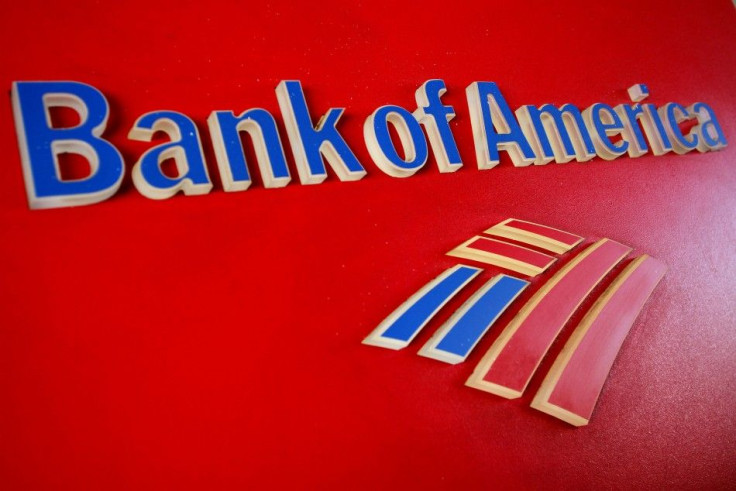Bank of America Earnings Preview: Modest Profit Predicted, Concerns Remain

Bank of America (NYSE:BAC), the second-biggest U.S. bank by assets, is expected to post a modest profit gain in the fourth quarter of 2011 as cost-cutting offset declining revenue from trading, retail and mortgage operations.
Analysts polled by Zacks Research forecast the Charlotte, N.C.-based bank, which reports fourth quarter and 2011 earnings on Thursday before the market opens, to report earnings of 21 cents per share, while those polled by Reuters expect earnings of 23 cents per share.
Those results would represent an increase over the loss of 16 cents per share in the fourth quarter of 2010, but a drop from the profit of 54 cents per share in the third quarter of 2011, which was mainly attributed to its sale of non-core businesses and accounting gains.
Like several competitors, including Citigroup, Goldman Sachs and JPMorgan Chase, revenue at Bank of America is expected to have fallen in the recently completed quarter.
We see across the industry weak trading revenue, Jefferson Harralson, a managing director of Keefe, Bruyette & Woods, Inc., told International Business Times. I don't think BofA will be immune to that.
Mortgage refinance activity is forecast to be down as low interest rates limited the bank's ability to earn money through traditional lending, added Harralson, who is relatively bearish on Bank of America, forecasting a loss of three cents per share in the fourth quarter.
Mike Mayo, CLSA bank analyst and author of Exile on Wall Street, forecasts Bank of America's fourth-quarter earnings on a core basis to be 10 cents per share.
Another burden on the bank's results could stem from the Basel accords, which requires banks to hold more capital as protection against financial disaster. Bank of America has increased its Basel I ratio to 9.2 percent and its Basel III ratio to 6.2 percent, according to Harralson.
You are going to see fairly significant capital improvements this quarter, he said.
Bank of America also took a revenue hit in its retail banking division because of a public relations disaster last fall. Its effort to institute a $5 monthly debit card fee to recoup declines in the fees it could charge retailers provoked a broad consumer backlash. The bank retreated, scrapping the idea in October. The upshot was nearly the entire fourth quarter going without that anticipated revenue.
In the face of revenue declines, Bank of America continued closing branches in secondary markets. It laid off thousands of employees in 2011 and announced it would cut another 30,000 jobs, around 10 percent of its workforce, and reduce expenses by $5 billion by 2014.
Bank of America also sold most of its stake in China Construction Bank for around $1.8 billion, which had contributed to the third quarter profit.
One result of that downsizing was that JPMorgan Chase surpassed Bank of America as the largest U.S. bank by assets.
Mayo said in a research note the entire U.S. banking industry will see a one to two percent decline in revenue in all of 2011, due to financial pressures, Eurozone woes and declines in new mortgages.
Bank of America had a 2011 to forget. For the full year, it endured further mortgage losses related to its Countrywide unit, one of the largest subprime mortgage lenders that it purchased for $2 billion. In December, the U.S. Justice Department announced a $335 million settlement for a predatory lending suite against Countrywide.
During 2011, its stock plunged from around $15 per share last January to below $5 in December. But during the new year, Investors seem to have warmed up to the bank, as its stock has ebounded in 2012, rising 19.33 percent to around $6.64 per share as of Wednesday.
Mayo expects Bank of America to have $92 billion in revenue in 2012, down 3 percent from the previous year, because of spread compression and more competition for higher borrowers. Expenses are projected to be down 22 percent to $61 billion.
© Copyright IBTimes 2024. All rights reserved.



















